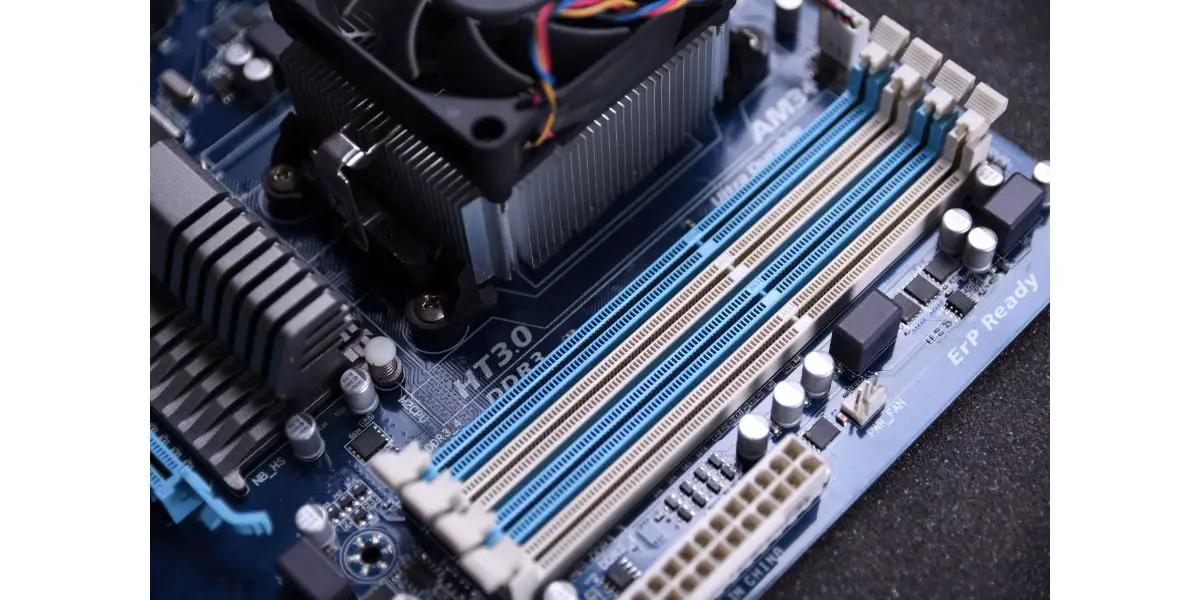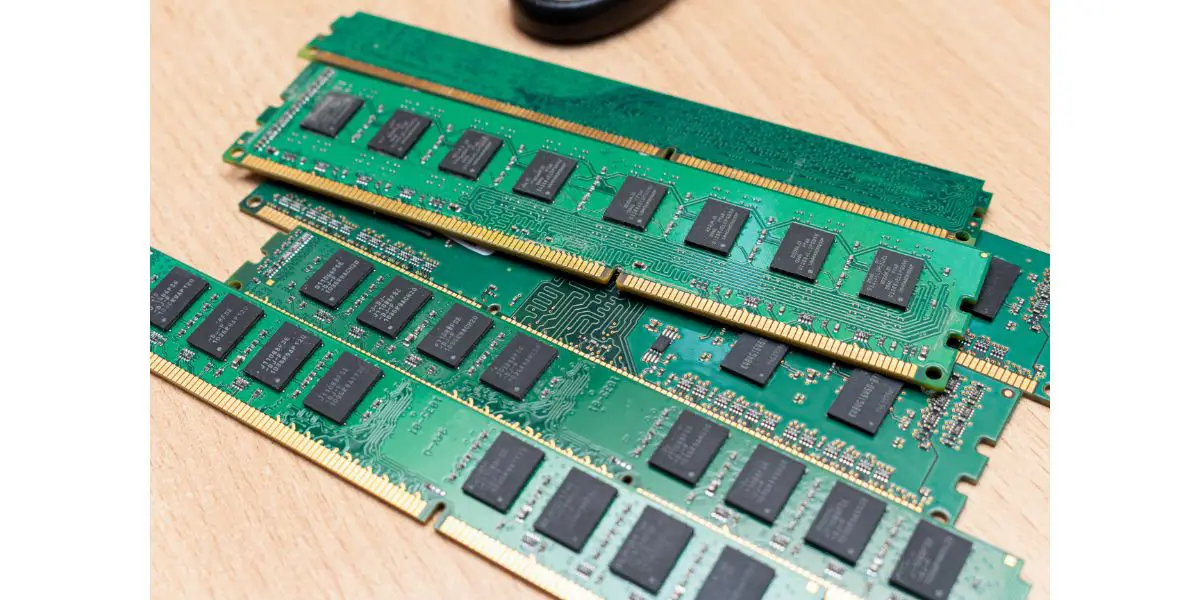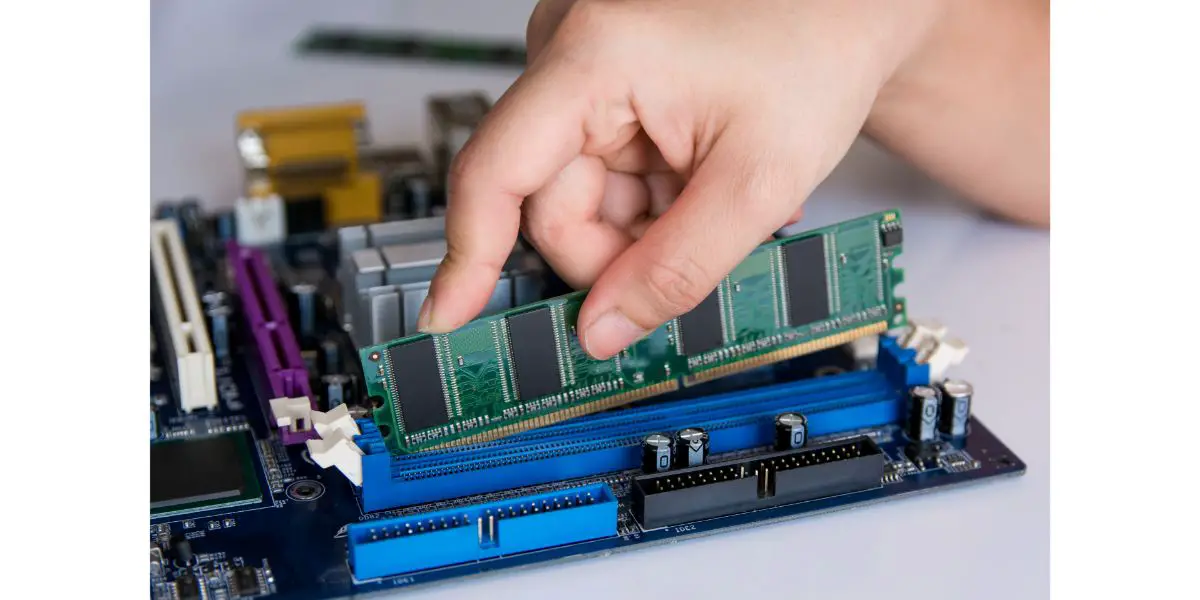Disclaimer: This post may contain affiliate links, meaning we get a small commission if you make a purchase through our links, at no cost to you. For more information, please visit our Disclaimer Page.
Random Access Memory is an essential part of your computer, storing all the information your computer is processing so that it can be retrieved easily. Every computer or laptop has memory slots in its motherboard, where RAM sticks are supposed to be inserted. Typical computers have four RAM slots nowadays, but how and why did manufacturers decide on this number?
Table of Contents
How Many RAM Slots Do I Need?
RAM is one of the most important specifications that people look for in a computer. Every motherboard has memory slots where you can see the existing RAM sticks and add more if you want to upgrade your RAM capacity.
Most computers and laptops typically come with 8GB of RAM, which is enough for most people who use their devices to browse or use basic programs.
Nowadays, most computers have a higher maximum capacity than 8GB, allowing you to upgrade your RAM. However, you may not need a RAM upgrade if 8GB is enough for your device to perform well.
Most motherboards nowadays can support up to 8GB per slot, but some can support up to 32GB per slot, which is more than enough for a typical user.
So, as a typical user, you generally don’t need more than two slots, but you have plenty of room to upgrade with the four slots your device offers.
Upgrading Your RAM
If you want to upgrade, the four RAM slots are usually more than enough for you to consider different combinations and find the best option. You don’t have to use all the slots, but they are provided to you by the manufacturer to give you options.
Four is the perfect number to allow plenty of combinations and opportunities for dual-channel modes, which I will explain below. Of course, a bigger number would allow for even more configurations and capacities, but these extra options are unnecessary for most people and take up more space.
How Many RAM Slots Should I Use?
Your motherboard’s four RAM slots can be used in many different ways, but some can provide more speed and efficiency than others. For instance, you can get 8GB of RAM in your motherboard by using one slot and an 8GB RAM stick or using two slots and two 4GB sticks. While the size stays the same, the performance will be better in the second scenario.
It is recommended that you use an even number of RAM slots to take advantage of the dual-channel memory configuration I mentioned above. The dual channel provides faster communication between the RAM and the CPU, improving the performance of your device.
Thanks to the four slots that your motherboard offers, you can use this configuration by installing two or four RAM sticks in the slots. As a result, a set of two 4GB RAM sticks, installed in the right slots, will give you a better overall performance than one 8GB stick.
You can also use all four RAM slots, which, as I explain below, will provide a better and faster performance thanks to your dual-channel configuration. It’s also possible to use three slots, but adding a third stick does not allow you to use dual channel mode, which can affect the speed of your device.
As you can see, the four slots that the motherboard uses are just right for whatever purpose you have. A single slot has more than enough capacity for your computer’s RAM, but four offer combinations that can improve the speed of your computer, thanks to the dual channel configuration.
Does It Matter Where I Put the RAM Sticks?
While all the RAM slots on the motherboard have the same capacity, the way you use them may make a difference, depending on the number of sticks that you want to install.
The four slots are positioned one after the other in a line, and you should keep in mind the positioning when you install more than one stick of RAM.
One or two RAM Sticks
One stick can go in any of the slots, so it doesn’t matter where you put it. If you have two sticks and want to take advantage of the dual-channel memory configuration, you should install the RAM sticks apart from one another, with one empty slot in the middle. Otherwise, you can’t use dual-channel mode.
Even Number of RAM Sticks
The same rule applies if you have four sticks and want to occupy all four slots available on the motherboard. With two pairs of RAM sticks, you can use the dual channel configuration if you place them separately from one another. So, one pair would be installed in the first and the third slots, while the other pair in the second and fourth.
Three RAM Sticks
If you have three RAM sticks, you can no longer take advantage of the dual channel configuration, so you can put them anywhere you want. Generally, it’s better to use two slots instead of three, which means less available RAM but better overall performance. However, if your focus is on the RAM capacity, you can use three slots.
What if I Use Any Slot I Want?
Even if you don’t consider the placement of the slots when installing your RAM sticks, your computer will still work, and the RAM will be utilized. However, you may not be able to take advantage of the full potential of your RAM sticks, which may affect the performance of your computer.
While the way you use the slots may not be a problem, you should take care to use the right RAM sticks; otherwise, your computer might be even slower. Different RAM sticks have different specs, so you should choose sticks of the same speed and capacity when upgrading your RAM.
If you use two RAM sticks with different specs, you won’t be able to use the dual-channel memory configuration, even if you have an even number of sticks. The computer might be able to work, but it will be slow and may have issues in the future.
In some cases, the problem will appear the moment you try to install the sticks, which won’t fit properly. Other times, the sticks will fit, but the computer will not restart because of incompatibility. Make sure to confirm that you’re using sticks from the same set before making the upgrade.
Should I Use All RAM Slots?
Different computers have different configurations, so if you want to upgrade your RAM, you should check if you have any available slots left for you to install extra RAM sticks. If only two of your RAM slots are taken, you should add another two to upgrade your RAM in order not to lose the dual channel mode.
However, some people hesitate to fill all the RAM slots because they believe they may be slowing down the device by using them to their capacity. This should not be a concern as long as the new sticks are compatible with your device.
You can use all four slots with no problem as long as they don’t exceed the designated capacity of the slots; if anything, your device’s performance may improve because of the dual channel configuration. Your computer may be faster than ever if you use all the available slots.
The very reason why these slots are available in the first place is the potential for better and faster performance, so you shouldn’t hesitate to use all of them if your RAM needs upgrading. If you’re not sure what the maximum capacity of your slots or your computer is, you can check it out on your computer easily.
Are There Motherboards With More RAM Slots?
For most users, even those who want to work with a lot of RAM, four slots on a motherboard are enough. Each one can have a capacity from 2GB to 32GB, but the average is 8, which is still plenty.
A more advanced computer with four 32GB slots has a potential 128GB of RAM available. Even with all this RAM capacity, there might be some users who might need more RAM to work fast and smoothly on their computers.
Fortunately, there are computers with motherboards that have more than four slots. Some computers have eight RAM slots, which means double the capacity and double the chances for dual-channel memory configurations.
Eight-slot motherboards are pretty rare right now and quite expensive because they are only necessary in very specific cases. Most of the time, even if you get a device with such a motherboard, you won’t need to take advantage of even half of what it offers.
These motherboards are typically available only for desktop computers since laptops have no space for extra slots. In the future, these devices may become more common and even standard, but for now, most people don’t need all this RAM capacity for the typical tasks they do on their devices.
Conclusion
Most motherboards nowadays have four RAM slots, offering enough capacity even for more advanced uses of your device while, at the same time, providing the opportunity to upgrade your RAM in different combinations. If you want to upgrade your RAM using these slots, take advantage of the dual channel memory configuration, using an even number of slots.



